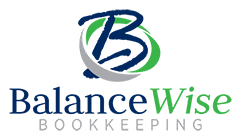Accounts Receivable Management
This is a full accounts receivable service which includes:
- Create, code and issue customer invoices
- Produce weekly and monthly aging reports to show who still owes money
- Reconcile accounts receivable
Do you extended credit to your customers when they purchase the product or service you sell? How well are you keeping track of how much each of them owes you? Are you invoicing promptly? The answer to these questions and the ones that follow will tell you whether or not you could use some help with accounts receivable management.
The number of days it takes to collect what is owed to you is called your cash collection cycle. Do you know how long each of your customers takes to pay? What is appropriate for your industry?
A company’s accounts receivable is an asset that could be used to invest in growth opportunities, buy new equipment, or develop new products if it were in your possession instead of your customers. Companies without formal, clear, and precise policies in place for issuing credit that prescribe when to grant credit, when to invoice, how much to charge, when to put an account on hold, and how to collect, inadvertently end up providing some of their customers with free financing. Unintended consequences can occur with poor enforcement of such policies. Some companies have been forced to borrow money to meet their own commitments because they allow their customers to pay late, causing a loss on just finance charges.
No company can afford to waste their financial resources. There are strategies for optimizing your accounts receivable to make your money work for you.
- Make sure to follow up with customers as soon as their payment becomes past due.
- Do not allow sales personnel to override credit limits or payment terms which could lead to losses from bad credit exposure.
- Enable electronic communication with customers
- Rather than simply crediting a customer account, make sure payments are allocated not only to the correct customer but also to the correct invoice, not automatically the oldest, so it is easy to see which accounts are up to date.
- Assign credit limits and payment terms.
- Do not allow sales reps to issue or change payment terms or credit limits without approval.
- Predetermine which customers gets a quantity discount and what percentage.
- Reduce transaction times by eliminating manual data entry.
- Approve or reject credit applications within a set period of time.
- Regularly track performance indicators, such as the percentage of customers who pay late, number of invoices issued, number of invoices past due, number of unapproved discounts, number of customers who ordered, percentage of write offs or collection rates.
- Measure payment performance against established metrics.
- Update customer profiles as changes occur, whether a new address, payment term, credit limit or circumstance.
- Ensure all employees adhere to common standards and practices for processing & reporting payments received.
- Ensure data accuracy by identifying who can override customer data or price changes.
- Consider automation to reduce time and human error.
Accounts receivable management helps minimizes the days sales are outstanding while preserving positive customer sentiment. From creating invoices to track what is sold, to providing aging reports & analyzing turnover ratio so you have an idea of when you might receive payment.
Established practices on providing credit to customers can increase a company’s profit by simply decreasing bad debt risk. If your company lacks them, outsource your accounts receivable management to a company that has them.
